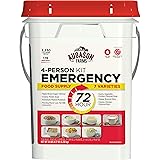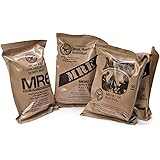Understanding Crowdsourcing
What is Crowdsourcing?
Crowdsourcing is this amazing approach where you tap into the collective wisdom of a group to gather ideas, feedback, or even solve problems. It’s like having a giant brainstorming session without the need for everyone to be in one room. In emergencies, this can mean getting help from people across the globe, uniting efforts for a common cause. Personal experience has shown me how powerful this can be.
By using crowdsourcing, you leverage diverse perspectives, which is really helpful in crisis situations. For instance, during natural disasters, individuals can report in real-time on what’s happening in their areas, providing valuable insights to those coordinating the response.
One thing I’ve learned is that when there’s an emergency, traditional approaches often fall short. But harnessing the power of the crowd can create a more dynamic and responsive tool for assistance.
The Benefits of Crowdsourcing
There are numerous benefits to utilizing crowdsourcing in emergencies. First off, it can mobilize resources swiftly when time is of the essence. I remember a local initiative during a severe storm that rallied neighbors to share food, shelter, and supplies.
Another major advantage is the accessibility of information. Crowdsourcing allows for the quick gathering of essential data from those affected, leading to better decision-making and response strategies. I’ve seen organizations use real-time data collected from the public to adjust their relief strategies.
Moreover, it empowers community members. When people are part of the solution, they feel more invested. This increases participation and can bring forth a surprising amount of creativity and commitment.
Examples of Effective Crowdsourcing
One prime example that comes to mind is during the 2010 earthquake in Haiti, where various platforms allowed people to send messages about needs and conditions. This system of sharing information became invaluable as multiple organizations came together, pooling resources and strategies in real time.
Another great instance is the use of platforms like Nextdoor or social media groups that help neighbors come together during crises. They create a sense of community, which is vital during emergencies. I’ve participated in several local efforts that stemmed from a simple Facebook group invitation.
== > What if ... Get a FREE Subscription to PREPARE
These examples show how effective crowdsourcing can be—not just in spreading awareness but in providing tangible aid, showcasing the creativity and resilience of communities coming together to help each other.
Establishing a Crowdsourcing Platform
Choosing the Right Platform
The first step to setting up a crowdsourcing effort in times of emergency is deciding on the platform. I’ve noticed that certain platforms work better depending on the context. For instance, organizations might choose Twitter for its rapid information exchange, while others might prefer Facebook groups for more detailed discussions.
It’s key to look at where the target audience hangs out online. If they’re in a particular app more than others, it’s wise to meet them where they are. I’ve often found success by focusing on platforms my community is already using; it reduces the barrier to participation.
And don’t forget about accessibility; ensure the platform is easy for all to use. Sometimes, simple is best. Accessibility issues can hinder participation, especially for those less tech-savvy.
Inviting Participation
Once you have your platform, the next step is rallying folks to contribute. Communication is crucial here. I’ve had great success using engaging and friendly messages to draw people in. Making it feel less formal and more like a community effort can lead to higher involvement.
Running some live events or meetups, whether virtual or in-person, is also a good idea. This builds trust and fosters relationships among participants, encouraging them to share their experiences and needs openly. It can be something as simple as an online brainstorming session.
Also, don’t be shy about sharing stories of those who have benefited from crowdsourced help. Personal stories really resonate and can motivate others to participate; they feel like they are part of something bigger than themselves.
Managing Contributions
When people start to contribute, managing their input effectively is vital to avoid chaos. I suggest establishing clear guidelines for contributions. This includes what kind of information is helpful, how often updates should be provided, and who the point of contact is for any questions.
It’s also important to acknowledge contributions. A simple thank you can go a long way. Whether through shoutouts or personal notes, recognition encourages ongoing participation.
Lastly, using moderators to facilitate discussions and keep things on track can help maintain a constructive environment. I’ve personally found having a group of engaged individuals who can help manage these interactions makes a world of difference.
Implementing Response Strategies
Assessing Needs
When things go down and emergencies hit, assessing the needs of those affected is hugely important. This is where the crowd really shines. Gathering real-time feedback from your participants about what they need most can inform response strategies effectively.
I often use surveys or polls to quickly gauge what people are struggling with. This simple practice allows for efficient allocation of resources where they’re most needed. I remember during a local flood, we used these tools to find out what supplies people were running low on and distributed accordingly.
Also, prioritize the most critical needs first and address them quickly. Having clear communication about what’s being done creates transparency and trust within the community, and trust is everything when mobilizing help.
Get Preparedness and Self-Reliance Tips. Subscribe Now!
Coordinating Efforts
Coordination is key! Once you’ve assessed needs, you can start mobilizing volunteers or resources. Having a clear plan in place is crucial. I’ve seen too many well-meaning efforts go sideways simply because there was no clear direction or leadership.
Using dedicated channels for coordination, like a Slack group or another communication app, can help streamline information flow. In my experience, having everyone on the same page helps reduce redundancy and miscommunication.
It’s also a good idea to designate roles among contributors, based on their skills or resources. This way, everyone knows what they need to do. I’ve often found that clear roles lead to a more organized and effective response.
Evaluating Impact
After the storm has passed (literally or figuratively), it’s time for some reflection. Evaluating the impact of your crowdsourcing efforts is essential. I’ve done post-event evaluations where we gather feedback from participants about what worked and where we fell short.
Surveys can help you understand how well the response worked and what could be improved for the next time. It’s an effective way to turn every experience into a learning opportunity. After all, we could all use a little advice from the past.
Lastly, sharing the results with the community helps reinforce the idea that their contributions mattered. It closes the loop and shows that working together can bring about real change. Remember, every voice counts!
Building a Community of Support
Encouraging Continuous Engagement
After the emergency has passed, don’t let the connections fade away. I like to keep the momentum going by encouraging ongoing engagement. Sharing updates about community initiatives or future needs can keep people informed and involved in local efforts.
Creating a culture of support means that when the next crisis hits, the community is ready to rally again. I suggest regular check-ins or events to keep everyone connected. The more we nurture these relationships, the stronger we are in times of need.
Also, consider creating a community resource hub online. This could be a forum where people can share offers of assistance or exchange helpful resources. I’ve seen success from a simple Facebook group transforming into a local resource center.
Fostering Trust Within the Community
Building trust is essential for any successful community effort. Being transparent about how contributions are used and keeping open lines of communication helps establish that trust. I make it a priority to share updates and financial reports with my community after an initiative.
Also, being consistent in communication builds reliability. Regularly sharing both successes and challenges helps set realistic expectations and fosters a sense of camaraderie. People feel safer to contribute when they see others actively engaging.
Finally, celebrate the connections and relationships built through these efforts. Highlighting personal stories and successes can inspire others to join the cause next time. Trust is built one story at a time.
Creating a Sustainable Model for Assistance
One of the most important aspects of any crowdsourcing effort is ensuring it can be sustained over time. I’ve explored various models to find what works best for my community, like forming alliances with local organizations to strengthen resources and support.
Developing a long-term vision for how crowdsourcing efforts can evolve to meet future needs is crucial. I love brainstorming ways to continue community support initiatives even when emergencies aren’t happening. This could mean regular outreach programs or educational events.
Your goal is to create something that can weather the storms—literally and figuratively. Fostering a sustainable model ensures that when the next crisis arises, your community is already ready with a pre-established system of support.
FAQs
1. What is crowdsourcing?
Crowdsourcing is the practice of obtaining ideas, services, or content by soliciting contributions from a large group of people, often through the internet. It’s great for collecting real-time information during emergencies.
2. How can crowdsourcing help in emergencies?
Crowdsourcing can mobilize resources quickly, gather diverse perspectives, and empower communities. It enables real-time data collection to inform better decision-making during crisis situations.
3. What platforms are best for crowdsourcing assistance?
The best platforms depend on your community’s preferences. However, popular choices include social media platforms like Facebook and Twitter, community apps like Nextdoor, or even specific crowdsourcing tools and websites.
4. How can I encourage others to participate in crowdsourcing efforts?
Engaging content, clear communication, and recognition of contributions go a long way in inviting participation. Hosting events or sharing success stories also helps build interest and involvement.
5. What should I do after an emergency response is completed?
Post-response, it’s essential to evaluate the impact, keep people engaged, and foster trust. Sharing updates and building community initiatives can help maintain relationships that are vital for future assistance efforts.






